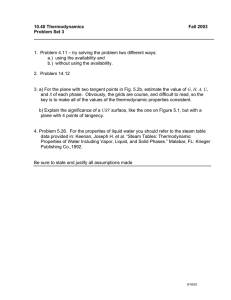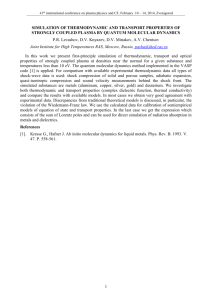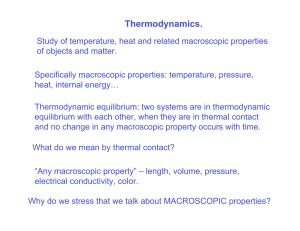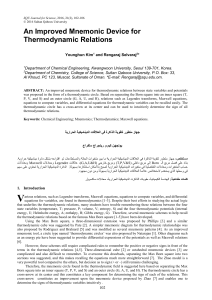17 - temperature
advertisement
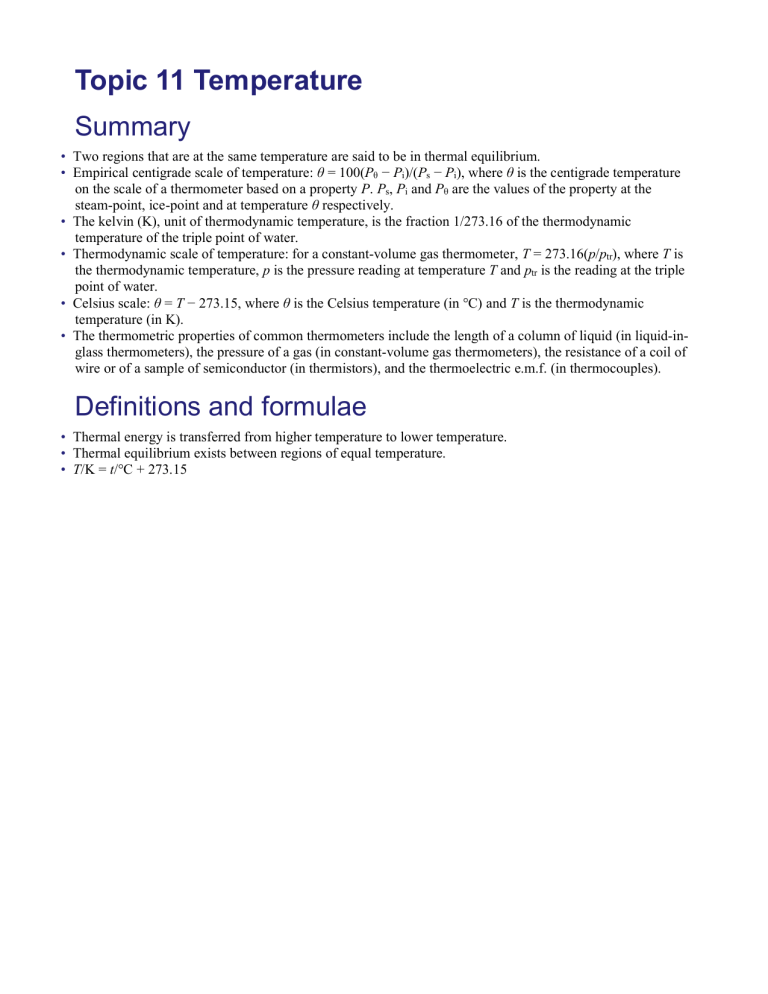
Topic 11 Temperature Summary • Two regions that are at the same temperature are said to be in thermal equilibrium. • Empirical centigrade scale of temperature: θ = 100(Pθ − Pi)/(Ps − Pi), where θ is the centigrade temperature on the scale of a thermometer based on a property P. Ps, Pi and Pθ are the values of the property at the steam-point, ice-point and at temperature θ respectively. • The kelvin (K), unit of thermodynamic temperature, is the fraction 1/273.16 of the thermodynamic temperature of the triple point of water. • Thermodynamic scale of temperature: for a constant-volume gas thermometer, T = 273.16(p/ptr), where T is the thermodynamic temperature, p is the pressure reading at temperature T and ptr is the reading at the triple point of water. • Celsius scale: θ = T − 273.15, where θ is the Celsius temperature (in °C) and T is the thermodynamic temperature (in K). • The thermometric properties of common thermometers include the length of a column of liquid (in liquid-inglass thermometers), the pressure of a gas (in constant-volume gas thermometers), the resistance of a coil of wire or of a sample of semiconductor (in thermistors), and the thermoelectric e.m.f. (in thermocouples). Definitions and formulae • Thermal energy is transferred from higher temperature to lower temperature. • Thermal equilibrium exists between regions of equal temperature. • T/K = t/°C + 273.15


